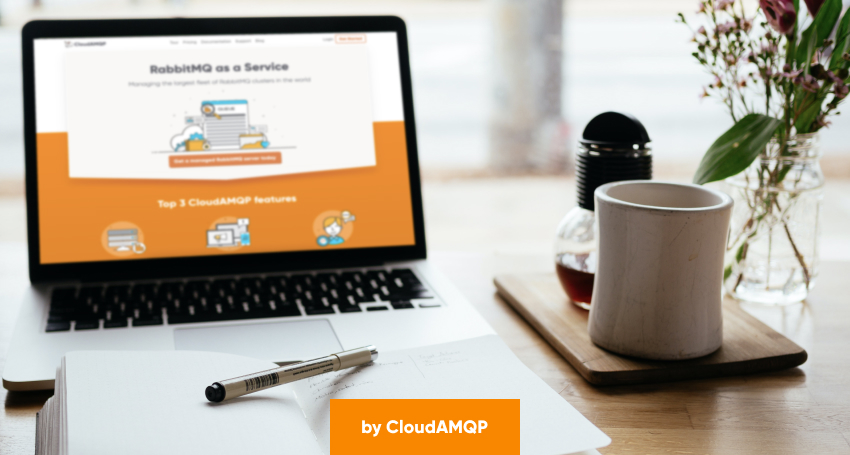Master Message Queueing
Scale up applications quickly and effectively
Message queueing solves the challenges of building complex systems that need to handle large volumes of data and unpredictable traffic spikes.
Maybe you're here because you recently heard of message queuing, or maybe you're looking into taking your business to the next level. Scaling business operations can be challenging. That's where message queueing comes into the play - making it simpler for companies to scale up their applications quickly and effectively. To provide a better understanding of how message queuing works, we've put together a video showcasing multiple use cases in a brief time frame.
Message queueing is making it simpler for companies to;
- Handle large volumes of data and unpredictable traffic spikes.
- Ensure reliable message delivery, even in the event of system failures.
- Scale up applications quickly and effectively, to handle changing demand.
- Decouple system components, allowing them to operate independently.
- Manage the processing of data in a more structured and efficient manner.
What is message queueing?
Message queueing is simply a way of transmitting data between and within IT systems. Rather than sending the data directly to each other, it gets added to a queue. This queue enables applications to be easily scaled up or down and adapted to new requirements. Message queueing is quickly becoming a popular technique. Let’s explore what it is, and why it’s so popular!

A queue in the “IT world” is essentially the same thing as in the real world; a line of things waiting to be handled, starting at the beginning of the line and processing it in sequential order. A message queue is a queue of tasks or messages sent between applications or within applications. It includes a sequence of work objects that are waiting to be processed.
A message in this case is the data transported between the sender and the receiver application. An example scenario could be: one system sends a message to alert its counterpart to begin processing a task while another message might bear information regarding a finished task or it could simply be an ordinary, straightforward message.
The sending part of the application is called a producer, it is the entity that create messages and delivers them to the message queue. A consumer connects to the queue and gets the message from the queue. Messages placed in the queue are stored until the consumer retrieves them or acknowledges them.
Benefits of using a message queue
Message queueing provides a number of benefits to systems that need to handle large volumes of data or unpredictable traffic spikes.
Some benefits of message queues are:
- Decoupling: A message queue allows you to decouple different parts of your system, meaning that they can operate independently of each other. This makes it easier to change and scale individual components without impacting the rest of the system.
- Asynchronous communication: Message queues enable asynchronous communication between different parts of your system. This means that requests can be sent and processed independently of each other, which can improve overall system performance and responsiveness.
- Support for multiple consumers: A message queue allows multiple consumers to process messages simultaneously, which can improve processing speed.
- Reliability: By using a message queue, you can ensure that messages are not lost in the event of a failure or outage. Messages can be persisted to disk and/or replicated across multiple nodes to ensure they are not lost.
- Scalability: A message queue can help your system scale by adding more processing consumers or nodes, to handle an increasing message volume.
- Integration: Message queues can be used to integrate with other systems or services, making it easier to share data and communicate with external systems.
Recommended reading about message queueuing
Message queueing use case, Adidas Runtastic

The adidas workout app utilizes the exchange of messages to facilitate communication between its different services. Whenever a user starts an activity, this triggers the generation of a message that all other relevant services can detect and receive information from. This setup allows for each service to "listen" to others that have useful data for them.
For example, when a workout activity ends, the leaderboard service will detect it and immediately update it with accurate details. The same applies to the personal record service.
Need help before choosing a message queue?
When selecting a message queue, there are a few key elements to consider. These include performance, scalability, reliability, security, and of course cost. It is important to understand what you need from your message queue before making a decision on which one to use, reach out if you want to discuss your architecture.
Free message queue training course
If you're new to message queueing, resources like online courses and documentation from popular systems such as RabbitMQ and Apache Kafka can be helpful.
The RabbitMQ Training Course is a natural way of continuing the journey of sharing our knowledge on this topic. And more importantly, we hope that more people will recognize the power of message queueing, especially in building modern-day applications and systems. Whether you’re running it in-house or if you choose to host it with us, message queueing can:
- Quickly scale up and down your application
- Build a robust infrastructure that is fault-tolerant
- Let different developer teams work on their part of the application, unbound to each other
- Let applications written in different languages communicate effortlessly
Need help getting started with message queueing?
At 84codes, we love message queueing, and we want it to be easy to learn! We have become known and appreciated for our pedagogical way of describing complicated things. We have written a book, made Youtube videos and written tons of blogs.
Contact our Customer Success Manager Jeff Hara with any questions and he will point you in the right direction!


